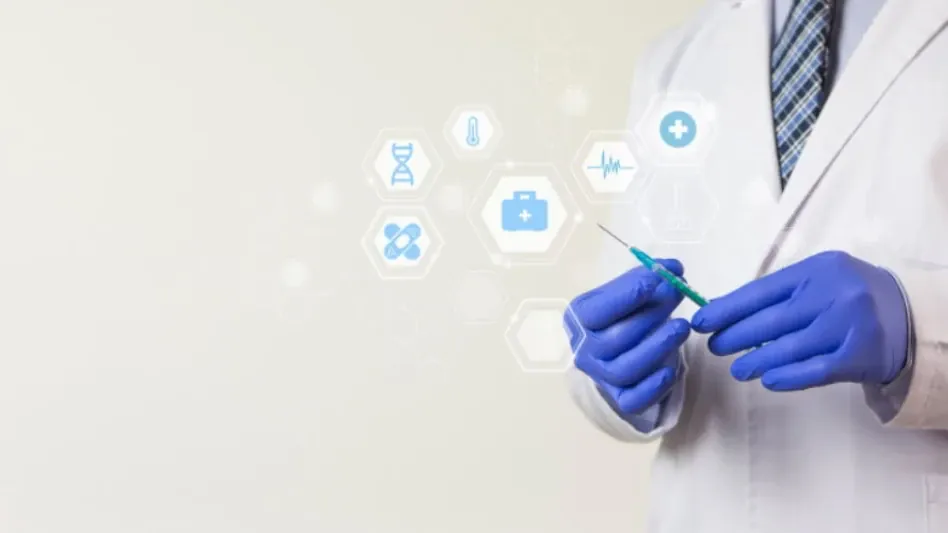Blockchain technology, initially developed for cryptocurrencies like Bitcoin, has exhibited transformational potential across various industries, including healthcare. This system, characterized by its decentralized structure, provides a framework for secure and transparent data storage. Within the healthcare sector, blockchain addresses critical issues surrounding data management and security. It enhances interoperability among disparate systems, reinforces patient privacy, and streamlines administrative processes. These advancements collectively contribute to creating a more efficient methodology for managing sensitive patient information.
Given the decentralized architecture of blockchain, data can be stored without a singular governing entity, making the system resistant to tampering. Once records are documented on a blockchain ledger, they can’t be retrospectively altered, thus ensuring medical records’ steadfast accuracy. Furthermore, blockchain’s transparency enables stakeholders to verify and track changes efficiently, thus bolstering trust among patients, healthcare providers, and various institutions.
Key Characteristics of Blockchain
Blockchain technology is defined by several key characteristics that make it particularly suitable for healthcare applications. Decentralization abolishes reliance on a central authority, distributing power among a network of users. This ensures that no single entity has control over the entire data set, reducing the risk of data breaches and unauthorized access. Immutability guarantees that public records, once recorded, cannot be altered retroactively. This feature maintains a reliable audit trail, crucial for preserving the integrity of medical records and other sensitive information.
Furthermore, transparency ensures that information is accessible and verifiable by all users within the network. This characteristic fosters trust among patients, healthcare providers, and other stakeholders, as they can easily verify the authenticity of the data. Security employs cryptographic techniques to secure data, making unauthorized access and tampering extremely challenging, which is particularly important in healthcare, where protecting sensitive patient information is paramount.
Enhanced Data Security and Privacy
Blockchain technology bolsters data security and privacy by redistributing control over medical records to patients. This decentralization reduces risks associated with traditional, centralized data storage methods, making it more challenging for cybercriminals to access sensitive data. Records distributed across multiple nodes ensure higher protection levels. The transparent nature of blockchain facilitates compliance with laws such as HIPAA and GDPR, securing a trustworthy healthcare environment. Patients can have more control over their data, deciding who can access their information and under what circumstances. This patient-centric approach not only enhances privacy but also builds trust between patients and healthcare providers.
Blockchain’s decentralized structure means that no single entity controls the full data set, making it less vulnerable to cyberattacks. Patients gain more autonomy over their medical records, deciding who has access and for what purpose. This increases transparency and builds a more secure environment, essential for meeting stringent healthcare regulations. Additionally, the data being spread out across numerous nodes ensures that even if one node is compromised, the integrity of the overall data remains intact. This significant leap in data security and privacy is crucial for modernizing healthcare systems and improving patient trust.
Improved Interoperability
Blockchain technology paves the way for improved interoperability by enabling different healthcare systems to share data efficiently. Standardized data formats ensure that healthcare providers have comprehensive patient information in real-time, promoting informed decision-making and timely medical interventions. Initiatives like CommonHealth and Health Information Exchange (HIE) are testament to blockchain’s capabilities in minimizing data silos and fostering healthcare collaboration. By breaking down these silos, blockchain can help create a more integrated healthcare system where patient data flows seamlessly between different providers and institutions.
Blockchain’s ability to standardize data and provide real-time access makes it easier for healthcare professionals to collaborate and make informed decisions. This eliminates much of the friction currently seen when transferring patient information between different systems and providers, enabling a more cohesive approach to patient care. Bringing data from disparate systems into a unified view allows for better resource allocation, improved patient outcomes, and reduced operational inefficiencies. The real-world application of blockchain in projects like CommonHealth showcases how effective standardized data formats can be in breaking down silos between healthcare providers.
Streamlined Administrative Processes
Administrative costs can significantly be reduced, and efficiency improved through automated tasks like claims processing using smart contracts on the blockchain. Considerably, overhead and disputes are minimized, freeing healthcare providers to concentrate more on patient care. Blockchain’s transparent ledger records all actions in a secure and verifiable manner, enhancing accountability. This can lead to faster processing times for insurance claims, reduced paperwork, and fewer administrative errors, ultimately improving the overall efficiency of healthcare operations.
The benefits of employing blockchain extend to optimizing other administrative functions, such as billing and inventory management. Smart contracts within the blockchain can automate various aspects of billing, ensuring accuracy and timeliness. This not only reduces the likelihood of human error but also accelerates processing times, benefiting both providers and patients. Similarly, real-time tracking facilitated by blockchain can streamline inventory management, ensuring medical supplies are appropriately stocked and reducing delays. These efficiencies collectively contribute to creating a leaner, more responsive healthcare administrative apparatus.
Strengthened Supply Chain Management
Blockchain ensures the authenticity of medical supplies and medications by providing meticulous tracking throughout the supply chain. Its implementation helps in preventing counterfeit drugs’ market entry and allows real-time inventory management, curbing stockouts or excesses. During crises such as the COVID-19 pandemic, where supply chain disruptions are prevalent, blockchain proves especially valuable. By providing a transparent and immutable record of the supply chain, blockchain can help ensure that medical supplies are genuine and reach their intended destinations without delay.
The ability to trace medical products back to their origins provides a way to verify their authenticity, combating the growing issue of counterfeit drugs. This capability is crucial not just during pandemics but for the everyday operations of healthcare facilities. Real-time tracking and transparent records help manage inventory levels more effectively, ensuring that essential supplies are always available and that surplus stocks are avoided. The overall effect is a more reliable healthcare system capable of withstanding various supply chain challenges, thus greatly enhancing patient safety and care quality.
Facilitating Research and Clinical Trials
Blockchain enables secure data sharing critical for research while maintaining anonymity and privacy. Researchers can access anonymized patient data, expediting discoveries. Additionally, blockchain brings transparency to clinical trials by maintaining an immutable record of protocols, data, and results. This transparency strengthens trust in research outcomes and supports medical science advancements. By ensuring that clinical trial data is accurate and tamper-proof, blockchain can help accelerate the development of new treatments and therapies.
The integrity of research data is paramount for scientific progress, and blockchain provides an exemplary solution by safeguarding this data from unauthorized alterations. Clinical trials benefit significantly from the transparency blockchain affords, wherein stakeholders can review the complete lifecycle of research data and protocols, boosting confidence in the results. This level of transparency is especially beneficial in rapidly advancing fields like personalized medicine and genomics, where timely and accurate data sharing can fast-track groundbreaking treatments and improve patient outcomes significantly.
Technical Barriers and Legacy Systems
Integrating blockchain with existing legacy systems is a significant challenge impeding its adoption. Many healthcare institutions still depend on traditional IT models incompatible with blockchain infrastructure. Transitioning to a decentralized methodology necessitates significant technology and infrastructure investments, which could deter smaller providers. Additionally, blockchain technology’s complexity may serve as a barrier for healthcare professionals who may not possess the requisite technical expertise. Proper training on using blockchain systems is essential to overcome industry resistance. As the healthcare industry evolves, educational initiatives will become crucial in ensuring a seamless transition to blockchain-enhanced systems.
The cost and effort required to revamp existing systems can be daunting for many healthcare providers, especially smaller and financially constrained institutions. Additionally, the training needed for staff to understand and manage blockchain systems is another substantial investment. Despite these challenges, the long-term benefits of increased security, efficiency, and interoperability make a compelling case for such investments. A well-planned, phased approach can help mitigate these challenges, wherein initial efforts focus on integrating blockchain with the most critical systems before expanding to broader applications.
Regulatory Challenges
The regulatory environment overseeing healthcare data is complex and ever-changing. Blockchain technology disrupts traditional ideas of data ownership and control, raising significant legal concerns about data privacy, patient consent, and liability. Regulatory bodies need time to create new frameworks that align with blockchain’s unique features. Cooperation between healthcare stakeholders and regulators is crucial to tackling these challenges. Open dialogue and pilot programs can provide insights into how to use blockchain effectively without breaching regulatory compliance. Transparency and effective communication are essential to building trust and ensuring blockchain fits within existing healthcare regulations.
Current regulatory guidelines need significant adjustments to suit blockchain’s decentralized and immutable nature. Laws like GDPR and HIPAA were designed for traditional data models, not blockchain. New legislative frameworks must be developed to ensure blockchain in healthcare complies with regulations. Cross-industry and international collaboration are key, as blockchain’s success relies on widespread adoption. Pilot programs can test new regulations, giving lawmakers data to draft policies that protect privacy while fostering innovation.
In summary, blockchain offers promising solutions for healthcare challenges, such as enhancing data security, improving interoperability, and streamlining administrative tasks. Recognizing the difficulties, including system integration, regulatory issues, and cultural barriers, is crucial. Encouraging collaboration, education, and transparency can help the healthcare sector transition to blockchain, leading to significant benefits. A thorough understanding and strategic approach to these obstacles can make blockchain a vital part of the future healthcare landscape.









